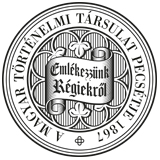Századok – 2021
2021 / 2. szám - VIDÉKI TÁRSADALOM ÉS PERCEPCIÓI A 18-20. SZÁZADBAN - Tompa László: A szerződéses jobbágyság rendszerének regionális mintázatai. Hat vármegye gyakorlatának összehasonlítása
TOMPA LÁSZLÓ térképek analízise pedig további agrár- és vidéktörténeti kutatások lényeges támasza lehet. Végül: az eddig feltáratlan megyékben feljegyzett parasztvallomások (fordítással ellátott, annotált, a felvázolt munka „melléktermékeként” szükségszerűen jelentkező) kiadása nagyban megkönnyítheti mind az országos, mind a megyei vagy akár helységszintű társadalomtörténeti elemzéseket. THE REGIONAL PETTERNS OF CONTRACTUAL TENANT PEASANTRY A Comparative Analysis of Six Counties By László Tompa Prior to the abolishment of serfdom in 1848, the majority of the agrarian population of the Hungarian Kingdom lived within the framework of the traditional tenurial constraints: they were excluded from land ownership, they were represented by their lords before the law, their dues could be arbitrarily raised by the lord of the land, and they could even be deprived from the right of free movement. After the wars of the early eighteenth century, however, a special group within the tenant peasantry expanded significantly: these were the contractual tenants, who, thanks to their contracts agreed to with their lords, lived among much more favourable conditions than did the majority of „perpetual serfs”. Their work and achievements considerably contributed to the revitalisation of the war-torn Hungarian countryside. Based on the cathecisms of Empress Maria Theresia’s Peasant Act, one of the most revealing types of sources for the research of contractual tenants, the paper examines and describes the status of such tenants in the mid-eighteenth century through a sample of more than 600 villages. 283
